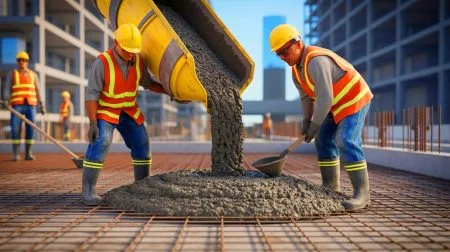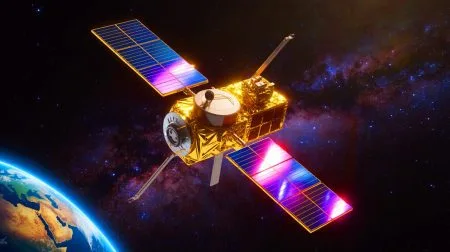The world’s economic powerhouses have all pledged to cut down on their carbon emissions in order to help meet CO2 reduction targets to mitigate climate change. Yet such pledges tend to be just so much hot air, according to a new report by Climate Transparency, an NGO that monitors the compliance of G20 nations with climate targets.
What the authors of the report, Brown to Green, have found isn’t encouraging: more than four-fifths, or 82%, of G20 nations’ energy supply still comes from fossil fuel. That means these industrialized countries are far from being on course to ensure that their CO2 reductions would help keep global warming within a manageable 1.5˚C rise. Unless G20 nations manage to halve their emissions by 2030, the authors warn, global temperatures are expected to rise by 3.2˚C, more than double the set target of 1.5°C.
“The G20 countries have hardly made any progress with transitioning towards low-carbon energy: like back in the 1990s, today fossil fuels still make up 82% of the energy mix,” explains Lena Donat, a policy adviser at Germanwatch, an NGO based in Bonn.
“G20 countries still show a strong bias towards keeping the status quo – which is a dominance of fossil fuels in the energy mix. To some part, this can be attributed to the power of the fossil fuel industry, and its close connection to policy makers and the media,” Donat, who contributed to the report, tells Sustainability Times. “Our report shows that all G20 countries still subsidize fossil fuels. Together they spent $147 billion in 2016. For emerging economies, it unfortunately often looks like the easiest option to follow the bad example of the largest economies; namely to invest in fossil energy projects rather than in green alternatives.”
Rather than step up their efforts to respond to the urgency of climate change, many G20 countries carry on in the manner of business as usual. They continue to invest heavily in major sources of greenhouse gas emissions. In Saudi Arabia, Australia and Japan, for example, fossil fuels still account for more than 90% of local energy supplies. These same countries continue to provide large amounts of subsidies to industries that rely heavily on fossil fuels.

In their power sectors, South Africa, Australia and Indonesia have the G20’s highest emissions intensity because of their dependence on a very large share for fossil fuels. None of these countries have effective policies in place to phase out the use of coal-fired plants. In all, the report says, 14 countries in the G20 countries need to have comprehensive plans to phase out coal.
Canada, France, Italy and the United Kingdom do have such plans, but they do not use much coal to begin with. French President Emmanuel Macron has just announced brand-new energy policies, which will include plans to close down the country’s last four coal-fired power plants by 2022. France is also seeking to shut down 14 of the country’s ageing 900 MW first-generation nuclear reactors by 2035.
Yet despite some progress in some nations none of the G20 economies’ climate pledges are on a 1.5˚C-compatible pathway, the report’s authors stress. Only India comes close with a 2˚C-compatible pathway. In other words, the planet remains on course to a warming of 3.2°C, which would have catastrophic consequences for life on Earth as we know it. To avoid that fate, G20 countries must halve their greenhouse gas emissions by 2030, yet few have longer-term reduction strategies to achieve this goal.
“India’s climate target is the closest to doing its fair share to bring us to below 2°C, while all the other G20 countries would bring global warming to 3°C, 4°C or even more,” Donat explains. “Mexico, Italy, the UK and France already have, in comparison with other G20 countries, low levels of CO2 emissions per capita and have managed to decrease these levels further in the last five years. Mexico, for instance, has made major progress in reducing emissions in the transport and building sector,” she adds. “Yet major coal users such as Australia, South Africa and Indonesia are showing no or only little sign to reduce coal use.”
Yet without serious concerted efforts from all the world’s leading economies, achieving the Paris targets will be impossible. “To keep global warming below 1.5°C, the G20 need to get emissions from the energy sector down to net zero by around 2050. This means that fossil fuels need to be out of the game within the next 30 years,” Donat stresses.
For that to happen, two steps are necessary: G20 countries need to cut their energy demands drastically and they also need to adopt renewable energy sources on a much wider scale. “There are enough studies that show that 100% renewable is possible, and would even have positive implications on jobs and GDP,” Donat notes. “The earlier the G20 governments understand this, the easier the transition will be. They can avoid pouring their money into stranded assets.”
Large parts of overall greenhouse gas emissions result from transportation and energy consumption by buildings. Among G20 nations, France, Japan and the UK lead the way with concrete plans to decrease the numbers of vehicles with fossil fuel-burning engines. The worst laggards are the United States, Canada and Australia, which have the highest transport emissions per capita with insufficient emissions standards, or even none, for cars.
Meanwhile, Canada and Germany have the highest emissions-intensity for buildings, but both countries have set targets to make all new buildings wholly green in their energy consumption.

The reasons for why a country is doing well or badly on its emission reductions are manifold. They include such variables as enduring attachment to specific energy sources, resources most readily available in a country, social factors and economic interests, including the influence of fossil fuel-based industrial lobbies. “It is of course easier for a country with a low share of coal in the energy mix to declare the phase-out of coal, as is the case in France,” Donat observes.
“India, by contrast, is facing a major challenge in bringing electricity to the poor and coal provides a source that is relatively easy to access,” she says. “Yet at the same time India also managed to double its renewable energy installed capacity between 2014 and 2017.”
Positively, even as most G20 nations are nowhere near achieving the required reductions in their emissions, many of them have made tangible progress in certain areas, whether it’s a speedy transition to renewables or a plan to embrace electric vehicles on an ever-wider scale. “G20 countries can already do a lot by looking at each other: France, UK, Italy and Canada have decided to phase out coal; Japan, France and UK have decided to stop selling petrol and diesel cars – the list of positive signs is long,” Donat observes. “It is key that G20 countries develop their own long-term plans on how to decarbonize their energy supply.”
Just as encouragingly, more and more people in industrialized countries are increasingly aware of the impending threats of climate change. More and more people want to see their countries adopt forward-thinking policies that can help militate against those threats. Public pressure on policymakers may yet induce them to adopt such policies.
“We see the public opinion shifting. For example, three-quarters of Europeans are in favor of subsidizing renewable energy and of reducing coal, according to a survey released in October,” Donat says. “And we see that more and more companies and investors are divesting from fossil fuels and setting their own emission targets.”
Did you like it? 4.5/5 (22)





